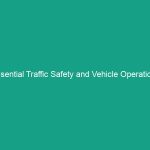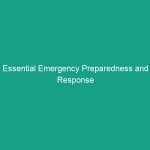Introduction
Good morning team,
Today, we’re diving into a crucial topic that affects each of us in our daily operations: Essential Table Saw General Safety Guidelines: Avoid These Critical Risks. Understanding and adhering to these Safety guidelines not only protects you but also ensures a safer working Environment for everyone around you.
Table saws are powerful tools that can make our jobs easier, but they also come with significant risks if not used correctly. By the end of this talk, you will have a clear understanding of how to operate a table saw safely and the critical risks we must avoid.
Understanding Essential Table Saw General Safety Guidelines
The term Essential Table Saw General Safety Guidelines refers to the fundamental safety practices that must be followed when using a table saw. These guidelines are designed to minimize risks and prevent accidents that could lead to serious injuries or fatalities.
The importance of these guidelines cannot be overstated. They impact not only your personal safety but also the safety of your coworkers and the overall efficiency of our operations. Many employees underestimate the Hazards associated with table saws, which can lead to complacency and dangerous situations.
Common misconceptions include the belief that accidents won’t happen to experienced users or that Safety Gear is optional. Remember, safety is a continuous commitment, and every step counts.
Key Hazards, Risks, and Safety Considerations
Operating a table saw involves specific hazards, including:
- Contact with the blade: This is the most obvious risk and can lead to severe injuries.
- Kickback: This occurs when the wood is thrown back at the operator, often resulting in injuries.
- Inadequate support: Improperly supported materials can lead to unstable cuts and accidents.
- Noise exposure: Prolonged exposure to noise from the saw can lead to hearing loss.
Ignoring these safety protocols can lead to real-world consequences. For example, a failure to use push sticks can result in fingers coming too close to the blade, leading to severe injuries. It’s essential to recognize these risks and take action to mitigate them.
Best Practices, Procedures, & Actionable Advice
Here are some Best Practices to follow when operating a table saw:
1. Always Wear Appropriate Personal Protective Equipment (PPE)
Wear Safety Glasses, hearing protection, and a dust mask to protect against flying debris, loud noise, and sawdust.
2. Keep the Work Area Clean and Organized
A cluttered workspace can lead to accidents. Ensure that all tools and materials are stored properly when not in use.
3. Inspect the Saw Before Use
Conduct a thorough inspection of the table saw before each use. Check for any damage to the blade, guards, and the overall functionality of the saw.
4. Use the Right Blade for the Job
Ensure that the blade is appropriate for the material being cut. Using the wrong blade can increase the risk of kickback and other accidents.
5. Always Use Safety Guards
Never remove safety guards or disable safety features. These are designed to protect you from accidents.
6. Use Push Sticks and Push Blocks
When making narrow cuts, always use a push stick or push block to keep your hands at a safe distance from the blade.
7. Maintain a Safe Position
Stand to the side of the blade when making cuts to avoid being in the path of potential kickback.
8. Stay Focused
Distractions can lead to mistakes. Stay focused on your task and avoid conversations or distractions while operating the saw.
9. Follow Proper Shutdown Procedures
After use, ensure that the saw is properly shut down and unplugged if necessary, especially when changing blades or performing Maintenance.
Real-life Incident Example
Consider the case of an employee who suffered a severe laceration while using a table saw. The investigation revealed that they were distracted and did not use a push stick for a narrow cut. This incident could have been avoided by adhering to the essential safety guidelines we discussed.
Regulations, Standards, and Compliance
Compliance with safety Regulations is not just about following rules; it’s about protecting your life and the lives of your coworkers. Relevant Standards, such as those set by OSHA, provide guidelines on Safe Practices and equipment use.
Understanding these regulations is critical. They are designed to ensure that everyone goes home safely at the end of the day. Non-compliance can lead to serious injuries and penalties for the company.
Employee Engagement & Discussion
Now that we have covered these essential guidelines, I’d like to hear from you. What safety challenges have you encountered while using a table saw? Are there specific practices you follow that help you stay safe?
Your insights can help us improve our safety protocols and ensure a safer working environment for everyone.
Conclusion & Key Takeaways
In summary, the Essential Table Saw General Safety Guidelines are vital for ensuring a safe working environment. Remember the key points:
- Wear the appropriate PPE at all times.
- Keep the workspace clean and organized.
- Inspect tools before use and follow safety protocols diligently.
By prioritizing these practices, we can significantly reduce the risk of accidents and injuries. Thank you for your attention today, and let’s commit to prioritizing safety in all our operations.


